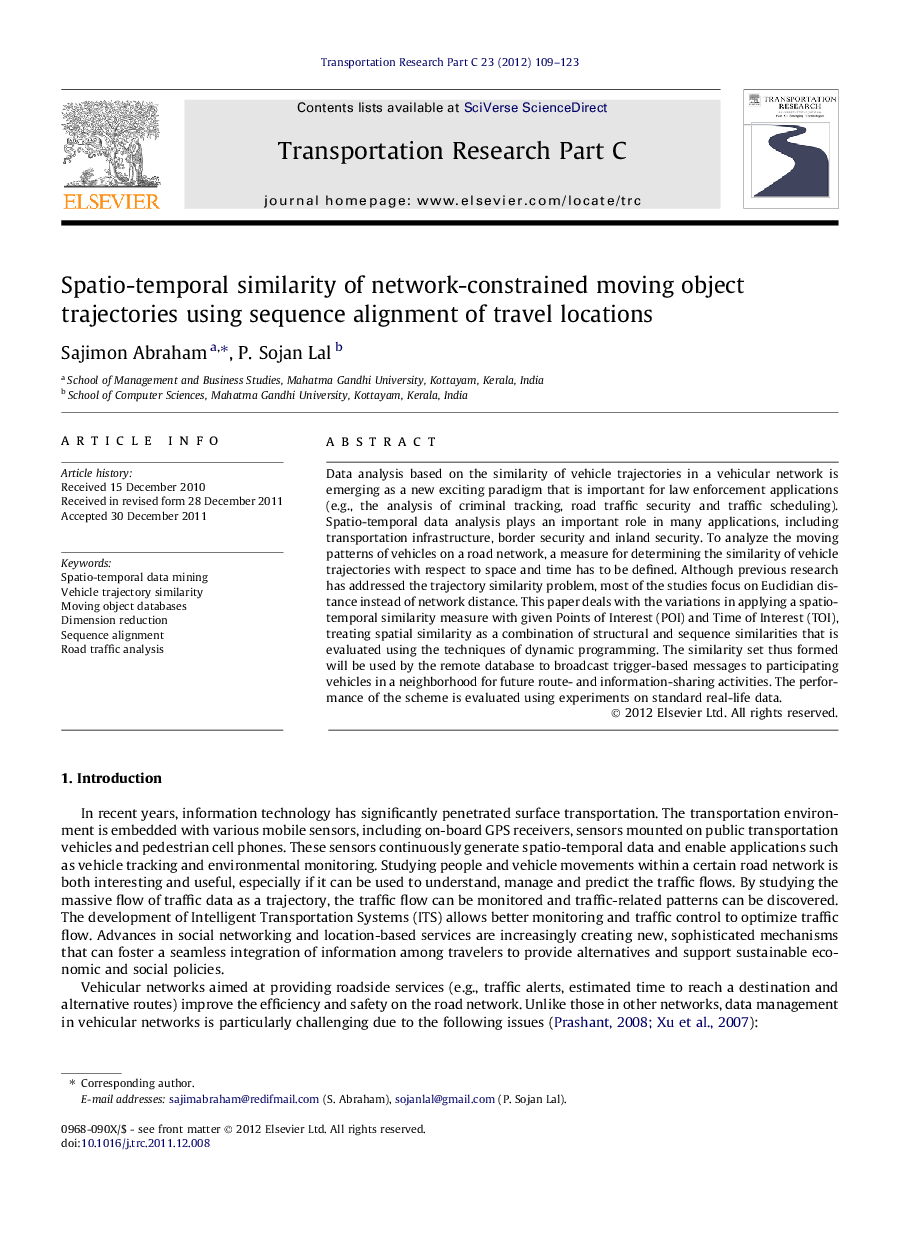| Article ID | Journal | Published Year | Pages | File Type |
|---|---|---|---|---|
| 526597 | Transportation Research Part C: Emerging Technologies | 2012 | 15 Pages |
Data analysis based on the similarity of vehicle trajectories in a vehicular network is emerging as a new exciting paradigm that is important for law enforcement applications (e.g., the analysis of criminal tracking, road traffic security and traffic scheduling). Spatio-temporal data analysis plays an important role in many applications, including transportation infrastructure, border security and inland security. To analyze the moving patterns of vehicles on a road network, a measure for determining the similarity of vehicle trajectories with respect to space and time has to be defined. Although previous research has addressed the trajectory similarity problem, most of the studies focus on Euclidian distance instead of network distance. This paper deals with the variations in applying a spatio-temporal similarity measure with given Points of Interest (POI) and Time of Interest (TOI), treating spatial similarity as a combination of structural and sequence similarities that is evaluated using the techniques of dynamic programming. The similarity set thus formed will be used by the remote database to broadcast trigger-based messages to participating vehicles in a neighborhood for future route- and information-sharing activities. The performance of the scheme is evaluated using experiments on standard real-life data.
► Spatio-temporal mining of vehicular data by integrating VANET with cellular network. ► Spatio-temporal similarity of vehicle trajectories in moving object database. ► Binary encoding scheme and dimensionality reduction in managing traffic data. ► Structural and sequence similarity between locations using dynamic programming. ► Experimental evaluations using two real-life vehicular data sets.
